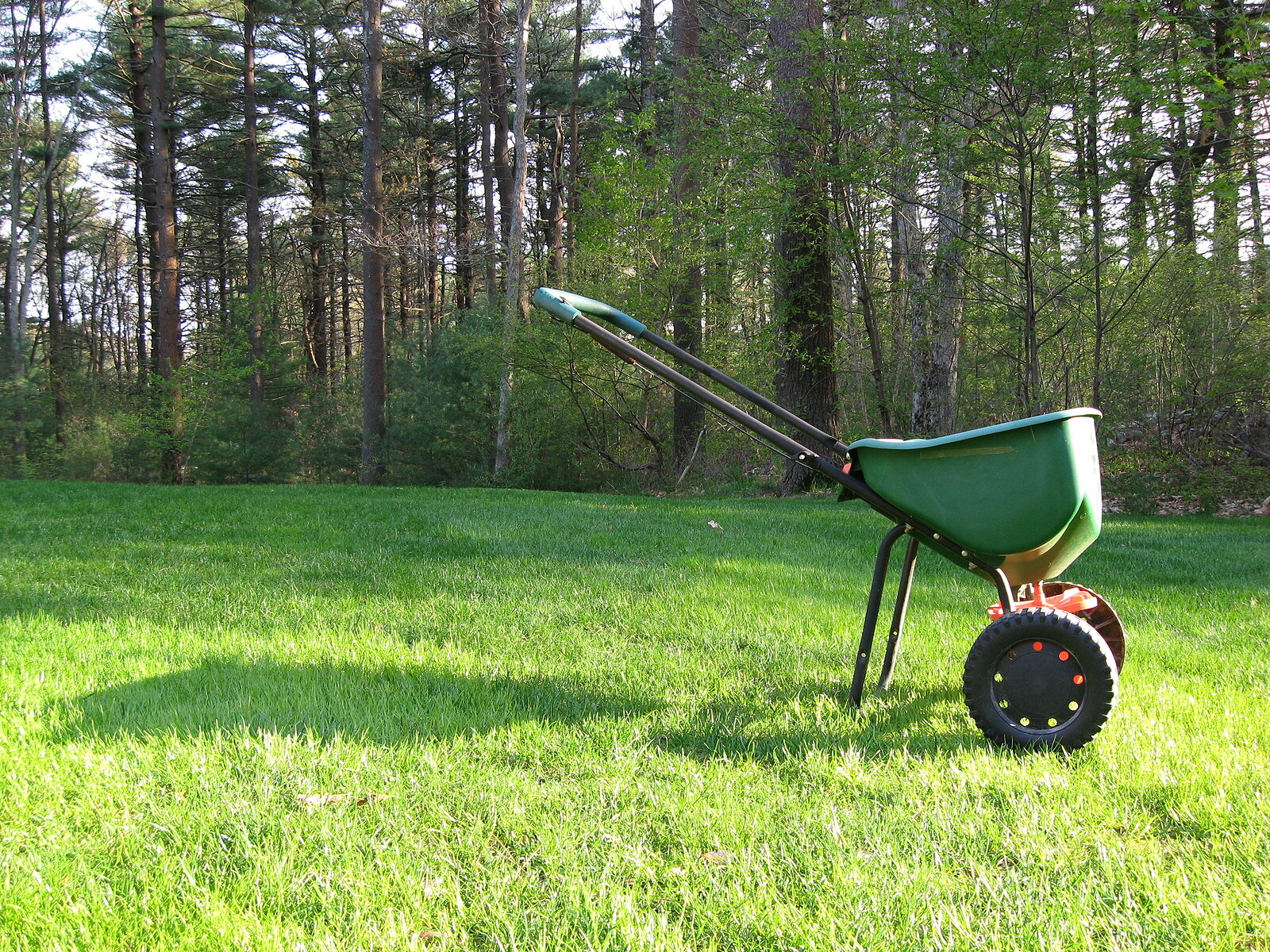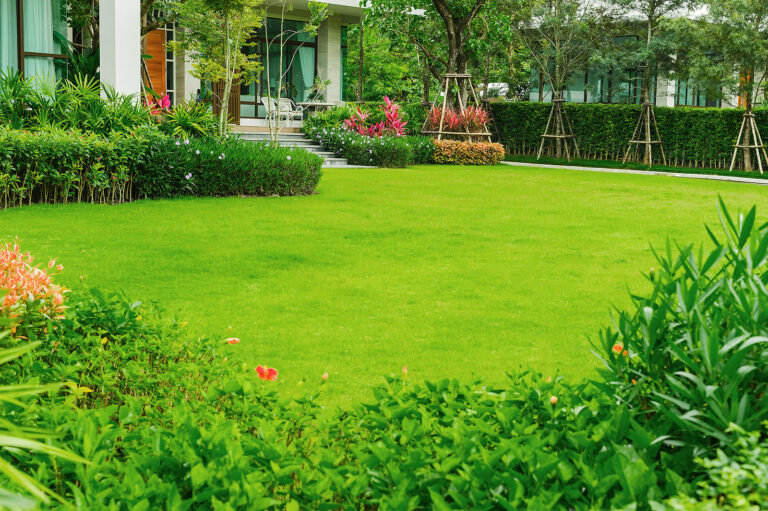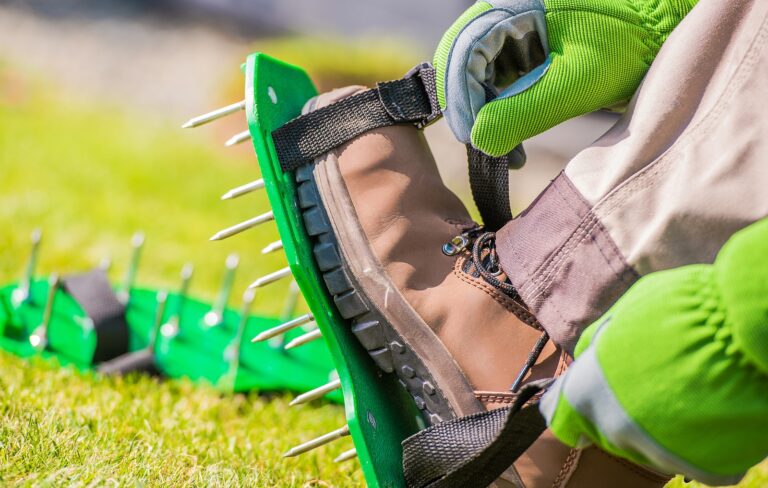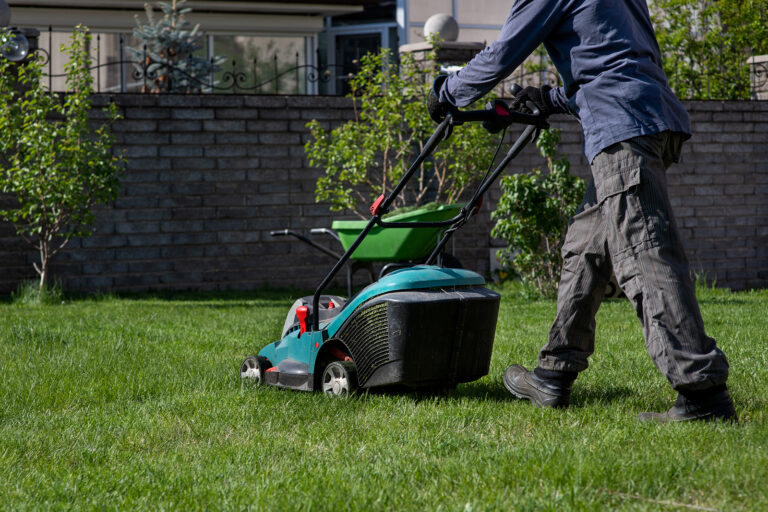How to Fertilize a Lawn
Most lawns should be fertilized at least twice a year with a mild, nonburning fertilizer. Drab color and slow growth are typical symptoms of under-fertilized lawns.
The best time to fertilize your lawn is when it is actively growing.
- Fertilize warm-season grasses when the weather is warm in late spring and again in mid to late summer.
- Fertilize cool-season grasses when the weather is cool in once in mid-spring and again in fall.
Apply fertilizers just before rain whenever possible, or water thoroughly after application to wash the fertilizer into the lawn’s root zone. Undissolved fertilizers left on the grass for more than a few minutes can cause chemical burning of grass blades or the roots.

Types of lawn fertilizers
- Water-soluble synthetic fertilizers: these fertilizers are commonly made from petroleum products. They readily dissolve in water; they are often called quick-release or fast-acting. Grass greens up quickly when synthetic fertilizers are applied because they are soluble synthetics and not dependent on microbial action in the soil like organic fertilizers. Synthetic fertilizers are effective even in cold soil. The effect of soluble synthetics is short-lived so they must be applied multiple times in the growing season. Grass grows rapidly after application requiring frequent mowing, however, when the fertilizer is spent, grass may slump. Overapplication of synthetic fertilizers can burn the lawn leaving burnt, dry patches.
- Slow-release fertilizers: also called controlled-release and timed-release fertilizers. Slow-release fertilizers provide nutrients at a predictable rate over a prescribed period—the pellets have coatings of varying thickness that release fertilizer at different times. Slow-release fertilizer the lawn will green more slowly than with synthetic water-soluble fertilizer. Some slow-release fertilizers act only after the soil warms to a certain temperature.
- Natural organic fertilizers: these fertilizes are made of dried or composted plant or animal waste; these fertilizers are composed of major and minor nutrients that are very slowly released along with micronutrients. Natural organics rely on soil microorganisms for the release of nutrients; microorganisms are active only if the soil temperatures are greater than 50°F (10°C).
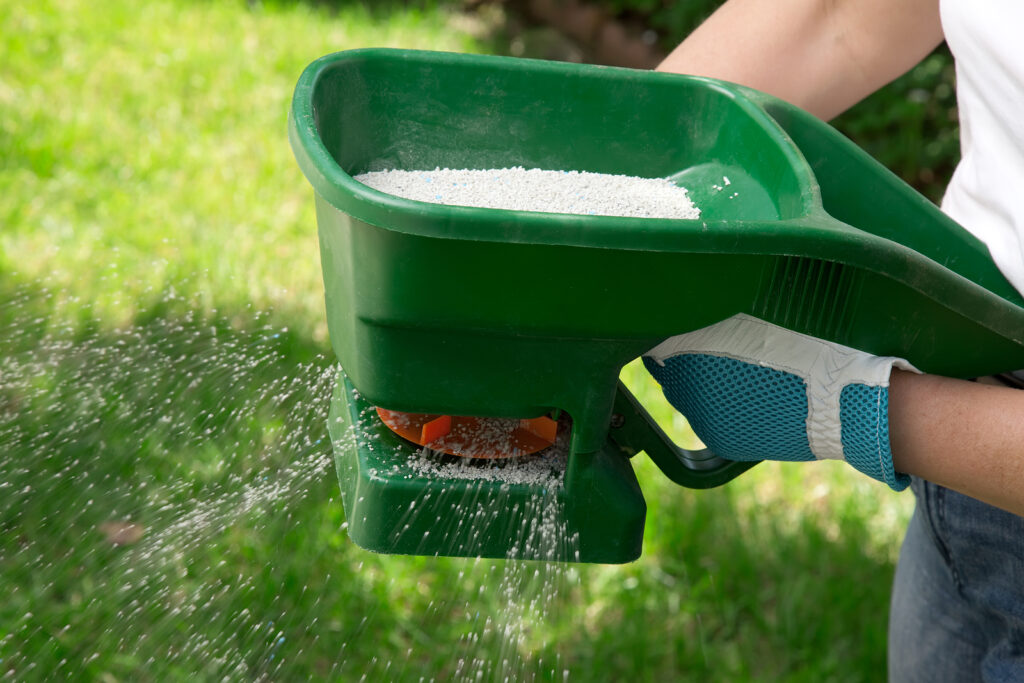
When to fertilize a lawn
- Minimum maintenance–one feeding: Apply a slow-release fertilizer in spring when the lawn starts to green up; one feeding will make the lawn denser, prevent weeds, and make the lawn healthier.
- Medium maintenance–two feedings: Apply the first feeding of slow-release fertilizer in spring; give cool-season grasses a second feeding in late spring; give warm-season grasses a second feeding in early summer. The second feeding will help thicken the lawn and help it withstand summer stress.
- Maximum maintenance–three to four feedings: Follow the two feeding schedule above; give cool-season grasses a third feeding in fall when grasses start growing faster after summer heat; give warm-season grasses a third feeding in late spring and the fourth feeding in mid-summer.
Fertilizer spreaders
- Handheld crank spreader: crank spreaders broadcast granular fertilizers from a small bin as you walk and turn the crank. Good choice for small lawns.
- Drop spreader: is a small cart with a handle that drops fertilizer from the bin; the application is narrow and more precise than a handheld crank spreader. Good choice for medium-size lawns.
- Broadcast spreader: is a small cart with a handle; fertilizer broadcast by a whirling wheel. Good choice for large lawns
Also of interest:

